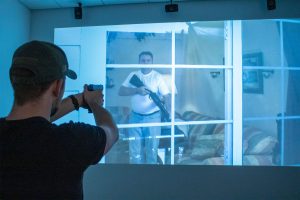Most shooters focus on hardware, what pistol to buy, what optic runs best, or which holster is the “must-have.” Others focus on technique, grip, stance, trigger press, and reload speed. All of that matters, but there’s a missing piece in most people’s training: learning to perform under stress.
Stress inoculation changes everything. You can be smooth on the square range, but once adrenaline hits, fine motor skills degrade, vision narrows, and your decision-making slows. In a real defensive encounter, the enemy isn’t the target; it’s your own body’s fight-or-flight response. If you’ve never trained against it, you’re gambling on hope instead of preparation.
What Stress Inoculation Really Means
Stress inoculation is exactly what it sounds like: exposing yourself to controlled, progressive levels of stress so that your body and brain adapt. Just like lifting weights makes muscles stronger, stress training makes your mental and physical responses sharper under pressure.
Instead of being blindsided by the dump of adrenaline in a critical incident, your body recognizes it and says, “I’ve been here before.” That recognition keeps you in the fight.
The Pitfall of the Square Range
 On a clean, flat range, you know when the buzzer is coming. The target isn’t moving. No one is yelling at you, closing distance, or forcing you to think about angles, bystanders, or low light. That’s necessary for fundamentals, but it’s also sterile.
On a clean, flat range, you know when the buzzer is coming. The target isn’t moving. No one is yelling at you, closing distance, or forcing you to think about angles, bystanders, or low light. That’s necessary for fundamentals, but it’s also sterile.
Square range skill alone can create a false sense of confidence. Real fights don’t happen at seven yards on a sunny Saturday afternoon. They happen in parking lots, living rooms, and dark corners of convenience stores.
How to Build Stress Into Training
At C2 Tactical, we go beyond static drills and expose students to realistic, stress-driven environments, without throwing them straight into chaos on day one. We add stress after a student has mastered all the basic (100-300) and practical (400-600) skill sets and is ready to add more realistic training.
- Our SIM Room is the heart of stress inoculation training. Force-on-force scenarios with live opponents demand fast thinking, movement, and judgment under pressure. It’s as close as you can get to real life without actual danger, and it’s where students learn the most about controlling adrenaline and making sound decisions in the fight.
- The Operator XR Virtual Reality System adds another layer by placing you in immersive, high-pressure situations that sharpen decision-making. VR is a useful tool, but nothing replaces the feedback and unpredictability of facing another human being in the SIM Room.
Why Stress Inoculation Matters
You don’t have to be a police officer or soldier to benefit from stress inoculation. If you carry a firearm for self-defense, you’re already acknowledging that one day you might face the worst-case scenario. The best time to discover how your body reacts to stress is in training, not in a fight for your life.
Stress inoculation isn’t about making you fearless; it’s about making you functional when fear is unavoidable.
Hardware and marksmanship are only part of the equation. If you want to truly prepare, you need to learn how to fight your own adrenaline and still perform. Stress inoculation training gives you that edge.
Ready to experience the difference? Book your SIM Room session today and take your training beyond the square range. Ask about the Operator XR Virtual Reality System if you want an additional layer of decision-making practice, but start where it counts, in the SIM.

